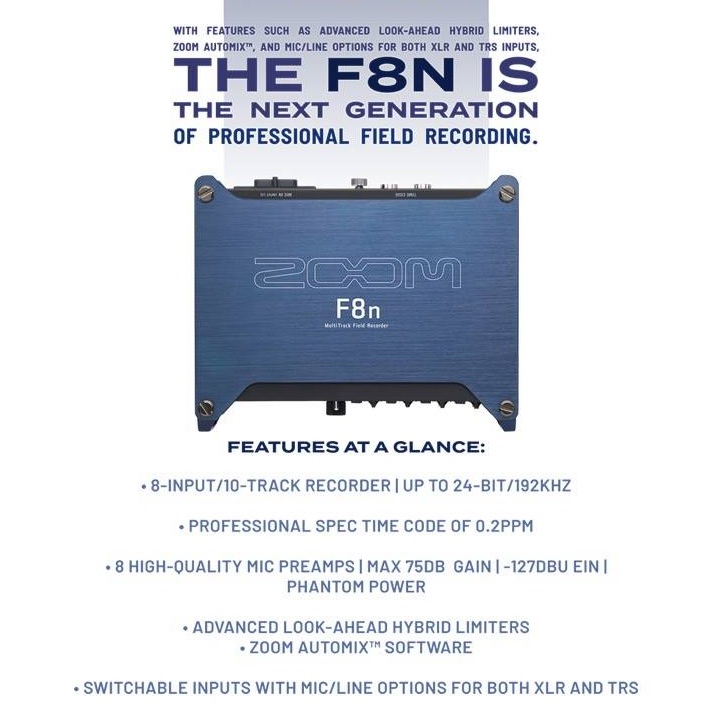Wish we could have greater customizability with our meter viewing?
I specifically want to be able to pick very specific tracks and not others to be displayed.
For example, if I’ve got a simple day with just doing ISOs of a boom and a lav then it would be nice to *only* see those on the screen.
We can then be monitoring big thick bold bars, rather than skinny little bars which are cluttered up with all the unused tracks on screen as well.
Feels strange to me that I’ve gone backwards in this area compared to my Zoom F8n/F4 & Zaxcom Maxx, I really deeply miss this when compared to the crowded Sound Devices 833 screen. Monitoring felt so nice to watch when I went back to using an F8n last week.
Unless there is some secret shortcut which gives me this precise surgical level of control over what meters are displayed that I missed reading in the manual?
I think the Sound Devices 6 Series can’t do this either, am sure a Sound Devices 633 user would appreciate this flexibility as well if they got a firmware update as well!
Zoom F8n
Do I hate Sound Devices?
A comment on Reddit got me thinking… because the quick and simple answer is: NO!!
I love what Sound Devices is doing now, I love what Sound Devices has done in the past in contributing to film sound’s history, and I wish I could own every product that Sound Devices has ever made! (as it is I own five of their products already)
Yet someone had got a rather different impression of me and what I thought of Sound Devices, and I replied back with what ended up being a rather lengthy and long comment indeed on Reddit! Thus I thought it is worth it spinning off to form this blog post as well.
Here is my response I wrote to him:
Probably also because there is an awful lot of negativity around Zoom, which is totally applicable for their H series but is wrongly justified in attacking their F series. And in the process of my defense I might come of as “too negative” of competing brands.
I believe *ALL* equipment that Sound Devices has made from their first MP-1 to their latest MixPre10T are very very fine machines.
But everything needs to be viewed in the context of their time, and in today’s marketplace vs the competition, and in terms of a person’s needs/wants.
For instance do I think the Sound Devices 552 makes any sense whatsoever to buy at its current brand new price? OH HELL NO!!! (you could buy a 633 for less than the cost of a new 552!) Do I enjoy my 552 that I own myself? Yes I do. Would I recommend anybody buy a 552 secondhand today? (they’re commonly listed for over US$1K, but can be found also for a little under US$1K without too much trouble) Nope! Only in very niche scenarios might it *maybe* make sense (or if you find an utterly crazy bonkers good deal!), I reckon they’re overpriced on eBay vs the options we have today in 2019. But did a 552 make sense for at that point in time those years ago for the price I paid? It certainly did!
I do feel that way about most of Sound Device’s older products: 552/442/744/722/702. They really need to sell at more like half (no, a third!) of their typical going prices before I think they make sense in the context of 2019. As for 9 out of 10 people it makes no sense for them to pay more for a secondhand 744 than it costs to buy a brand new Zoom F8n! Or to pay more for a 702 than a F8 is on sale or secondhand.
A few exceptions (due to their prices on eBay being low enough to still make sense in 2019, but none of these would I be keen to recommend buying full price for in 2019 except maybe the MM1 if you needed it ASAP) which I feel their eBay prices are decent *ish* representation of their true worth might be:
The MM1 (great for a boom op!), MP1 (handy little thing to have in your tool kit), MixPre/MixPreD/302 (useful if you’re still doing a lot of old fashioned directly cabled to camera stuff on small shoots, but still… I’d be inclined to say just get a Zoom F4?), 788T (but it is a tough ask to want to spend double what a new F8n is on a secondhand 788T, however it might make sense for some people. I think it is a close call as to if I should even include the 788T in this category as I still feel the 788T’s eBay price is over inflated, but it is at least a more reasonable proposition than say paying for an overpriced 702 which will fail to even meet the needs of many modern 2019 productions), and 664 (which can be found at a big discount to the price a 664 goes for new, which brand new I feel is too closely priced to the newer 688).Thus what Sound Devices do I feel are worth buying *new* in 2019? Their entire MixPre series of recorders, 633, 688, and 970
But it depends so very very very much on context. Is it a brand new college grad? Then the 970 would be an **awful** choice for him! Or even a 688 would likely be very wrong. While a 633 would be wrong for many one man bands who are operating a camera as well, and should instead be considering a MixPre3 (or MixPre6). As I feel the MixPre3 is a wonderful recorder to pair with a camera such as a Fujifilm X-T3 or Nikon Z6 (or any of the many other popular mirrorless cameras out there to film with)(.
So circling back around to the topic which started this, I’m usually always recommending a Zoom F series recorder if the assumed context is they’re a newly starting out production sound recordist seeking their first ever recorder (or if not their first *first*, it is an upgrade from something way worse like a sub $300 Tascam or a Zoom H series or such).
Because in those scenarios I see the clearly best choices to be starting out with are (in increasing costs): Tascam DR60D (if they’re so dirt broke they’re panhandling on the streets! But if this is true then I think they’ve got bigger problems to consider than “what recorder to buy”), Zoom F4, Zoom F8, Zoom F8n, the “industry standard” Sound Devices 633 (but *only* go with the 633 if their total budget is $15K or *more*, as if you’re going to only go with buying new pro grade “industry standard” kit from the start then you’re going to blow waaaay past that $15K budget)
So in summary, I think all of them are great products which Sound Devices has ever made, but if you’re starting out trying to build a small sound kit then in terms of their price (especially their older products with their still high eBay prices, but is even applicable to their latest line up as well) for many people it doesn’t make sense if you’re wanting to get great value for money for your very small and extremely limited budget compared to the alternatives we’re spoiled with in 2019.
However, I still see it as highly likely I’ll own a 6 series in my near ish future (but I’m waiting to see first if a 2nd generation 6 series product will happen! Such as a “Sound Devices 666”? Haha! But my wild guess is we’ll instead see a new “Sound Devices 8xx” series come out next).
I wrote a couple of other blog posts as well back in 2018 and 2017 which took somewhat of a big picture overlook at what recorders there are to consider:
http://ironfilm.co.nz/most-popular-sound-recorders-on-bh-in-2018/
http://ironfilm.co.nz/which-sound-recorder-to-buy-a-guide-to-various-indie-priced-sound-recorders-in-2017/
Three Years of Firmware Updates for the original Zoom F8, what does the future hold for the new Zoom F8n?
Currently I am very excited about the brand new Zoom F8n which just got announced, as you can see from the blurb it has some amazing specs, all for only US$999! (same price as the original F8 at launch, and cheaper than the indicated US$1200 when Zoom announced at NAB 2018 that a F8n was in development) However not everyone seems to be as happy about this as I am.
In response to people complaining that their original F8 doesn’t have all the bells and whistles of the F8n and asking if their F8 will get updated to this as well (it might? But I wouldn’t hold your breath), I wrote up this somewhat lengthy response:
The F8 original has had three years of excellent support from Zoom in updating it. I feel that is a perfectly reasonable level of support, better than that even!
Plus there is the possibility the F8n has a more powerful processor in it than the F8?? So maybe the F8 is not even physically capable of all of the software features of the new Zoom F8n?
Currently the F8 is at firmware update v4.10, that is a *lot* of updates!
Here a few of the highlights:
v2.0:
https://www.learnlightandsound.com/blog/2015/12/27/zoom-f8-audio-recorder-firmware-v2-0
Sound reports
Trim knobs can be used as faders
False take folder
Scene number advancement
Change previously recorded track names
Show track names on level meter screen
PFL solos tracks during playback
Shortcuts
Those are some big BIG UPDATES there! And that isn’t even all of it from the v2.0 firmware update.
v3.0:
https://www.zoom-na.com/news/f8-firmware-update-v300
Monitoring input signals of specific tracks without recording
Backing up / loading saved settings.
Adding a TONNE of extra functionality to be used with the new FRC-8 and a keyboard.
Again, another big BIG update.
v4.0:
Extensive ambisonics support!!!! wow
https://www.zoom-na.com/news/firmware-update-zoom-f8-firmware-40-recording-360-degree-audio
Another big big update.
And this is not even counting the many smaller updates between the big updates, which further improved the F8 during its lifetime.
I feel buyers of the F8 when it came out have been served very very well by Zoom, and I can only hope I get a similar series of updates during the lifetime of the Zoom F8n! 😮 I wonder what the future holds for the F8n? I certainly have some hopes for Zoom F8n which might still come to pass.
Seems like it was only yesterday that I was unboxing the Zoom F4. But actually it was in late 2016 when the Zoom F4 was announced (and I very shortly afterwards purchased, been a great upgrade from my previous Sound Devices 552 / Tascam DR680 combo).
What I’d like to see in the new Zoom F8n
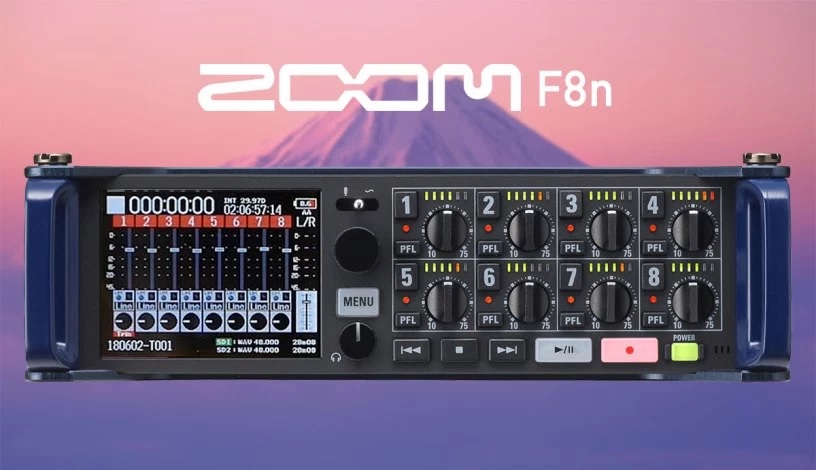
With the Zoom F8n not far away with a release date of July, I’d thought I’d write up my hopes for the F8n which seem like reasonable wishes (or at least semi reasonable!). Many of these might also be doable as a firmware update for the existing F8/F4 models.
What we know currently about the new Zoom F8n is:
The headphone amp will be improved (wasn’t a deal breaker for me beforehand, but certainly improving the headphone amp would be very nice, especially when you’re trying to record quieter ambiances)
The XLR inputs will be mic/line switchable, which is a nice small addition. So then I won’t need to use 1/4″ cables from my Lectrosonics transmitters for putting line level into the recorder.
Improved limiters that “look ahead” (via the magic of time travel! Or rather the magic will be done via having a cache).
Price will be US#1200 (but not set in stone), which is steeper than the US$1K launch price of the original F8, but not by much at all (although, the F8 now has fallen in price to under uS$800! Which is amazingly cheap). And the F8n is still a lot cheaper than the Sound Devices MixPre10T (and the F8n isn’t even that much more than say the MixPre-6, yet I’d much rather have the Zoom F4 as my only main recorder than the MixPre-6. So even at US$1.2K the F8n will be absolutely phenomenal value!).
Plus also a number of secret unannounced improvements, which we’ll find out about in July. And it is about these which I’m writing about that I hope we’ll see. Although we can’t set our hopes up too high! As the Zoom F8 original has only been on the market for two and a half years, which is a somewhat short period of time in the professional sound market. Thus we can see the Zoom F8n as more like a mid life cycle product refresh.
Now onto my hopes and wishes for the new Zoom F8n (and even ideas for possible firmware updates for the existing F8/F4 models):
Currently the F8/F4 has “consumer line level output” (or mic level), which basically makes their so called “line level output” pointless for me to pair with any of my wireless transmitters or to send directly wired to camera. The F8n needs proper pro line level output rather than their current anemic “line level”.
Metadata History: I love that when I’m entering in metadata into my F4 I can quickly grab past metadata entries via scrolling through the history, rather than dealing with the finicky on screen keyboard. However, the history page doesn’t go anywhere nearly far back enough! Plus for the sake of metadata consistency it is really nice if I can keep on reusing exactly the same spelling/description as I’ve used in the past on the shoot.
PFL key: on the topic of metadata, why don’t I get more info about the track when I hit the PFL button? As sometimes I might forget what it is I’ve assigned to one particular track, and rather than hunting down into the metadata menus for everything, it would be much faster to be able to leap to that specific traffic to see. By in the PFL menu to see the name of the track from the metadata, and the option to edit the metadata for this track.
Shortcut key: why why on earth do you need to press the STOP key on the F8 as part of accessing a shortcut function??? Seems like sheer madness to me! As if you need to access something quickly during a take (as often happens) I do not want my fingers to go anywhere near that STOP key! Ideally the Zoom F8n will have a dedicated shortcut key like my Zoom F4 has, or at the very least come up with a different arrangement than the high risk approach of using the STOP key as part of the shortcut key press combo. Yikes.
While on the topic of the stop button, could it please be illuminated? Would save fumbling for it in the dark at the end of a take. Also if the stop button had a very small little bump on it (like a Braille dot) that would also help finding it without needing to look down directly for it.
Safety track: this is a feature I really like of the Zoom F8/F4, and I nearly always use it for at least my boom mic. Especially with the way many productions “shoot the rehersal” or with actors/directors going off script, and you’re running sound solo so you’re booming as well then it is nice peace of mind to know you’ve got another layer of insurance at work. However, currently the safety track is set completely independently of the main track (heck, you could even set the gain of the safety to be higher than the main track if you wished!).
But for the vast majority of shoots you don’t need that degree of customization, and I’d rather trade that freedom for instead the speed of just having the safety track be automatically a set amount lower than the main track (although this should be customizable, to say: 0, -6, -12, -24 dB or any other number you might wish to use it for. As depending on the expected dynamic range of the scene you can then select the appropriate sized gap between the main track and the safety track). Thus I’d hope in the safety track recording menu of the F8n (or even the F8/F4, with a firmware update) to have an option for the safety track to either be freely set to any level or to be set to a fixed amount lower.
On the topic of things the F8n could do automatically to make your life easier:
Automix, like the Sound Devices 633 and 688 have.
Automute the outputs when not recording, very handy indeed if you want to give a degree of privacy to people who are wired up while a take is not rolling.
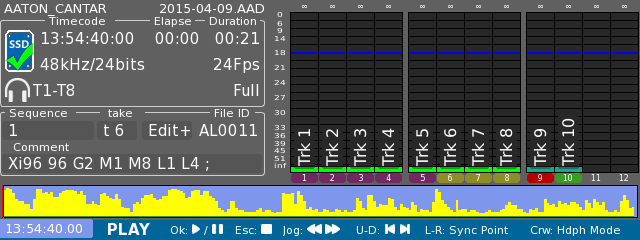
A rather ambitious desire I’ve got for the F8n is showing audio waveforms of recorded tracks, even if it doesn’t show it for all the tracks at once but only the one selected track at a time. One example of where such a feature could come in very handy is if you want to check back on if a track is ok (maybe you want to check if a wireless hit or a clothing rustle is overlapping a line of dialogue), then you can very very quickly use the waveforms as a guide to skim ahead to exactly the right points on the track to listen to. This would massively speed up my process of quickly checking up on tracks afterwards. And I’m sure you can come up with more examples of how this could be a handy feature to have (such as quickly at a glance checking across the whole take for if any serious peaking happened, this is super handy if say you have had to drop your audio bag in a car boot during a driving scene and then you’ll be able to do a quick check on the take with a glance when the car gets back).
Currently I believe such a feature with audio waveforms being displayed is only on the Aaton Cantar X3 and the Cantar Mini, two recorders at the opposite end of the price spectrum to the F8n!
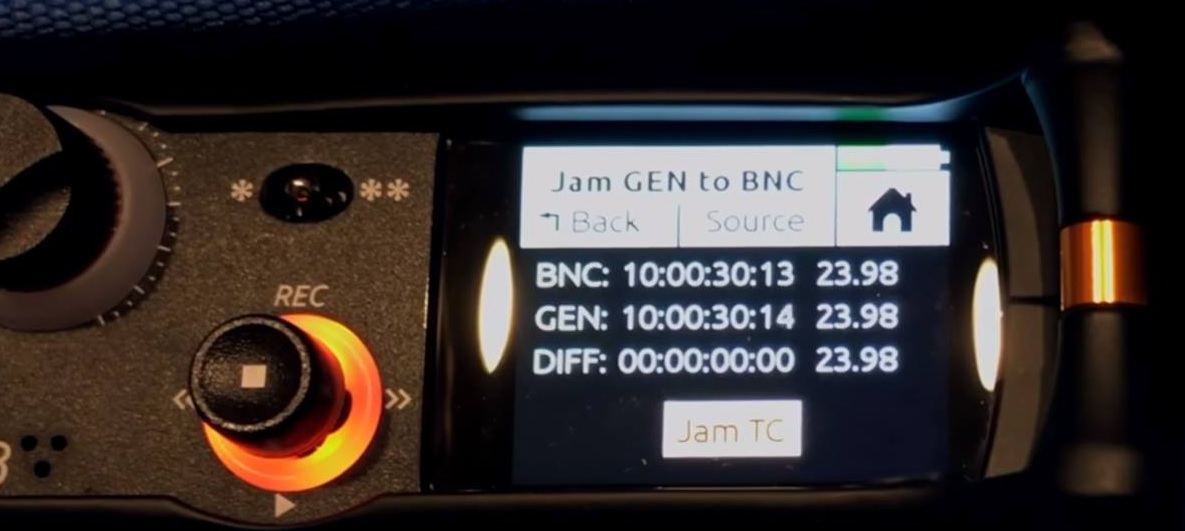
Currently the Timecome screen in the menu for the F8 (and F4) just displays the current internal TC and what is sees from the external source, but it would be very handy indeed if it could compare the two to show the difference between them like in this image from the Sound Devices MixPre10T’s screen. This would be useful for troubleshooting problems, catching out issues before they arise, testing out new gear, or simply for triple checking things for your own absolute confidence on set.
(side note: yes, I do notice that 10:00:30:13 is not the same as 10:00:30:14! Guessing this might be a problem with either the recorder display’s refresh rate and/or an issue with the rolling shutter of the video camera that this screen grab came from? Maybe. Anyway this just highlights why it is important for the recorder to calculate the Timecode difference to then tell us the difference. Rather than rely upon our own eyesight or cellphone snap shots, as I have done before)
While on the topic of timecode, a quirk that really bugs me as a flaw, is that pre-record completely fails to work if you’re using External Timecode at the same time. Which is rather annoying indeed, and caught me out a couple of times until I realised this slightly strange behavior was happening.
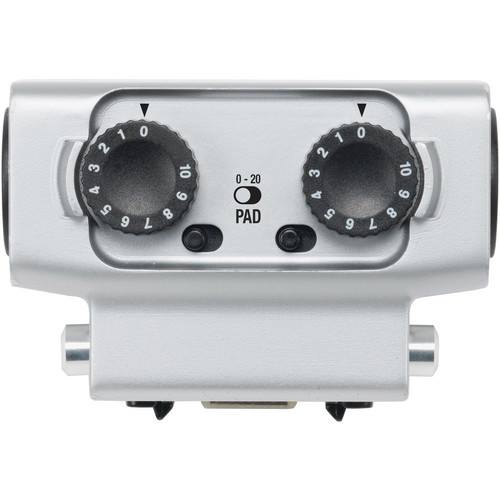

On one past shoot I had issues on a rooftop that was stacked full of radio/tv/cellphone antennas, which my F4 experienced but my Sound Devices 552 was trouble free (luckily! So I switched over to the 552). Additionally any time I use my RodeLink transmitter too near to my F4 then I run into issues (simple solution: I don’t use it! Or at least only have the receiver in my bag, not the transmitter). Thus I hope Zoom improves the RF shielding with the Zoom F8n.
A very low priority for me personally, as I rarely use my F4 as a USB interface, but it would be nice if the F8n could be used as a USB interface and a recorder at the same time. As my F4 can’t record at all once it is set up as a USB interface (and I believe the current F8 has the same issue as well).
Another small but handy change I’d like to see is if the clip peak indicators could automatically clear themselves (for those times when I’m booming and recording, and don’t have a spare hand or time to clear them myself after slating even via a shortcut) after a selectable length of time after you start rolling (for instance 15 seconds later, or even 2 minutes later, which you could pick depending on the type of production you’re on. Some shoots are very quick and timely between “turn over” and “mark it”, but others….. are not). The reason why I’d like to see this feature is because very often while I am booming I’ll look down at my recorder wondering if a track peaked, but I can’t tell! Because the peak indicator is still there (unless I manually cleared it) from when the take was slated at the start of the take.
AES inputs would be nice on the Zoom F8n, but I suspect very unlikely with Zoom’s target demographic.
Last but far from least important, is my wish for B format support for the new Rode NT-SF1 ambisonic microphone:
Zoom already supports B format decoding for the Sennheiser AMBEO ambisonic microphone in their F8 & F4 recorders, thus I hold out reasonable hope that when the Rode NT-SF1 ships then Zoom will bring out a firmware update for the Rode NT-SF1 ?
